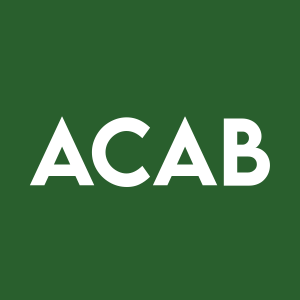Welcome to our dedicated page for Atlantic Coastal Acquisition II news (Ticker: ACAB), a resource for investors and traders seeking the latest updates and insights on Atlantic Coastal Acquisition II stock.
Atlantic Coastal Acquisition Corp. II (NASDAQ: ACAB) provides investors with comprehensive access to official company announcements and market-moving developments. This dedicated news hub aggregates all regulatory filings, merger updates, and strategic initiatives related to this special purpose acquisition company.
Our curated collection enables efficient tracking of ACAB's progress in identifying acquisition targets, maintaining Nasdaq compliance, and executing its SPAC mandate. Users will find timely updates including SEC filings, leadership statements, and material event disclosures.
The resource prioritizes verified information from primary sources, focusing on merger timelines, capital structure changes, and corporate governance matters. All content maintains strict neutrality regarding investment merits while providing the factual foundation for informed analysis.
Bookmark this page for streamlined monitoring of ACAB's regulatory submissions and acquisition progress. Regular updates ensure stakeholders remain informed about this SPAC's evolving position in the mergers and acquisitions landscape.
Atlantic Coastal Acquisition Corp. II (NASDAQ: ACAB) received a notification from Nasdaq on June 3, 2024, indicating non-compliance with listing requirements due to a delayed filing of its Quarterly Report on Form 10-Q for the period ending March 31, 2024. This notification does not immediately affect the listing of the company's securities. The company has 60 days to present a compliance plan to Nasdaq and is working to finalize the financial statements to file the 10-Q in the upcoming weeks.

